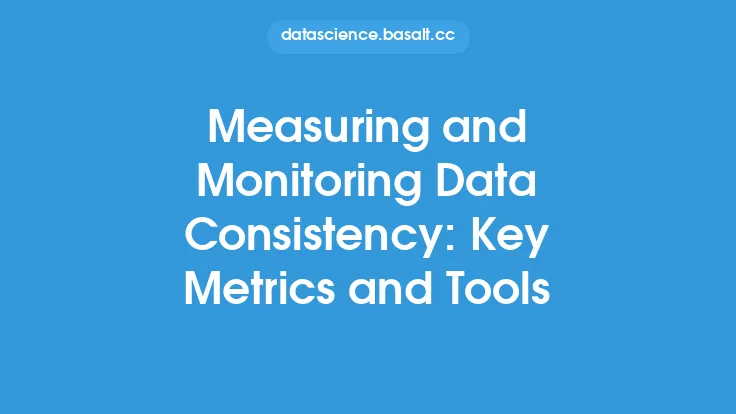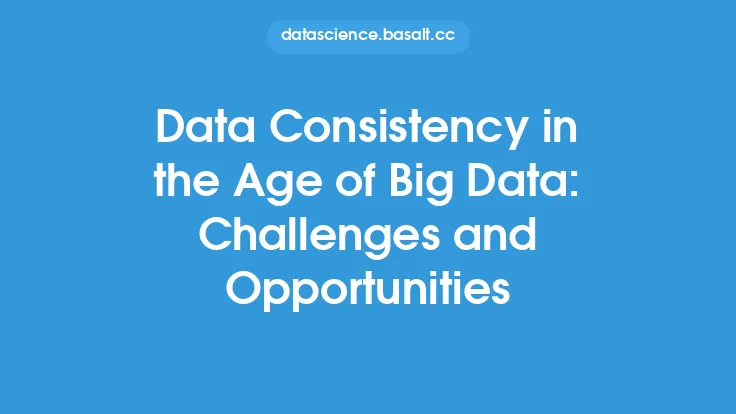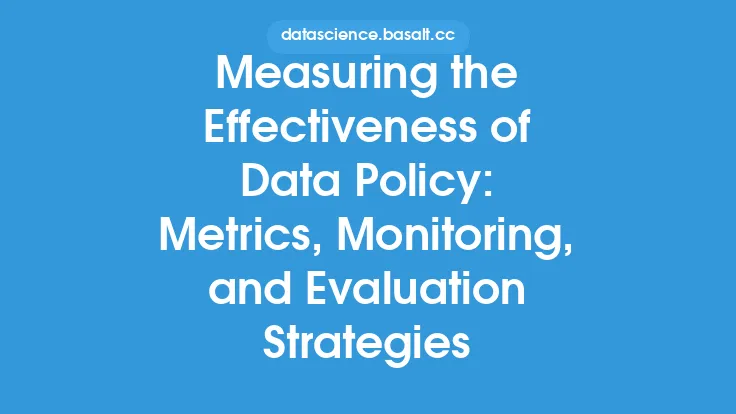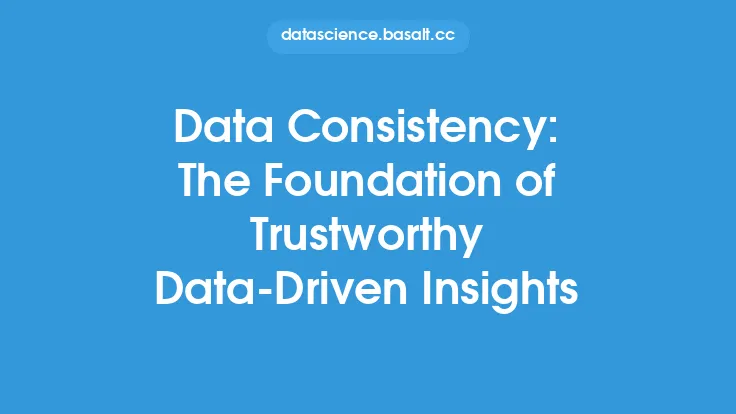Data consistency is a critical aspect of data quality, and it is essential to recognize the role that human factors play in maintaining it. While technology and automated processes can help ensure data consistency, human error and lack of awareness can often lead to inconsistencies and errors. Therefore, it is crucial to implement effective training and awareness strategies to address the human factor in data consistency.
Introduction to Human Factors in Data Consistency
Human factors refer to the psychological, social, and organizational elements that influence how people interact with data and systems. These factors can affect how data is entered, processed, and maintained, and can ultimately impact the consistency and quality of the data. Some common human factors that can affect data consistency include lack of training, inadequate communication, and insufficient awareness of data quality policies and procedures. By understanding these human factors, organizations can develop targeted strategies to mitigate their impact and improve data consistency.
The Importance of Training in Data Consistency
Training is a critical component of any data consistency strategy. It is essential to provide employees with the knowledge and skills they need to collect, enter, and maintain high-quality data. This includes training on data quality policies and procedures, as well as on the specific systems and tools used to manage and maintain data. Effective training programs should cover topics such as data entry best practices, data validation and verification, and data quality metrics and monitoring. Additionally, training programs should be ongoing and regularly updated to reflect changes in systems, policies, and procedures.
Awareness Strategies for Data Consistency
Awareness strategies are also essential for promoting data consistency. These strategies aim to educate employees about the importance of data quality and the role they play in maintaining it. Awareness strategies can include activities such as data quality awareness campaigns, workshops, and seminars. These activities can help to raise awareness about the impact of human factors on data consistency and provide employees with the knowledge and skills they need to improve data quality. Additionally, awareness strategies can help to promote a culture of data quality within an organization, where employees understand the importance of data quality and are motivated to maintain high-quality data.
Technical Aspects of Data Consistency
From a technical perspective, data consistency can be achieved through a variety of means, including data validation, data verification, and data normalization. Data validation refers to the process of checking data for errors and inconsistencies, while data verification refers to the process of confirming that data is accurate and complete. Data normalization refers to the process of transforming data into a standard format to ensure consistency and comparability. Additionally, technologies such as data governance tools, data quality software, and master data management systems can help to automate and streamline data consistency processes.
Implementing Training and Awareness Strategies
Implementing effective training and awareness strategies requires a structured approach. First, organizations should conduct a needs assessment to identify the specific training and awareness needs of their employees. This can involve surveys, interviews, and focus groups to gather information about employees' knowledge, skills, and attitudes towards data quality. Next, organizations should develop a training plan that outlines the specific topics and skills to be covered, as well as the methods and materials to be used. The training plan should also include a schedule for delivering the training, as well as a plan for evaluating its effectiveness. Finally, organizations should establish a system for monitoring and maintaining data consistency, including regular audits and quality checks.
Best Practices for Training and Awareness
There are several best practices that organizations can follow to ensure the effectiveness of their training and awareness strategies. First, training programs should be tailored to the specific needs and roles of employees, rather than being generic or one-size-fits-all. Second, training programs should be interactive and engaging, using a variety of methods and materials to keep employees interested and motivated. Third, training programs should be ongoing and regularly updated, rather than being a one-time event. Finally, organizations should establish clear metrics and benchmarks for evaluating the effectiveness of their training and awareness strategies, and should use these metrics to make adjustments and improvements over time.
Conclusion
In conclusion, the human factor plays a critical role in maintaining data consistency, and effective training and awareness strategies are essential for addressing this factor. By providing employees with the knowledge and skills they need to collect, enter, and maintain high-quality data, organizations can improve data consistency and reduce the risk of errors and inconsistencies. Additionally, awareness strategies can help to promote a culture of data quality within an organization, where employees understand the importance of data quality and are motivated to maintain high-quality data. By implementing effective training and awareness strategies, organizations can improve data consistency, reduce costs, and enhance decision-making.





